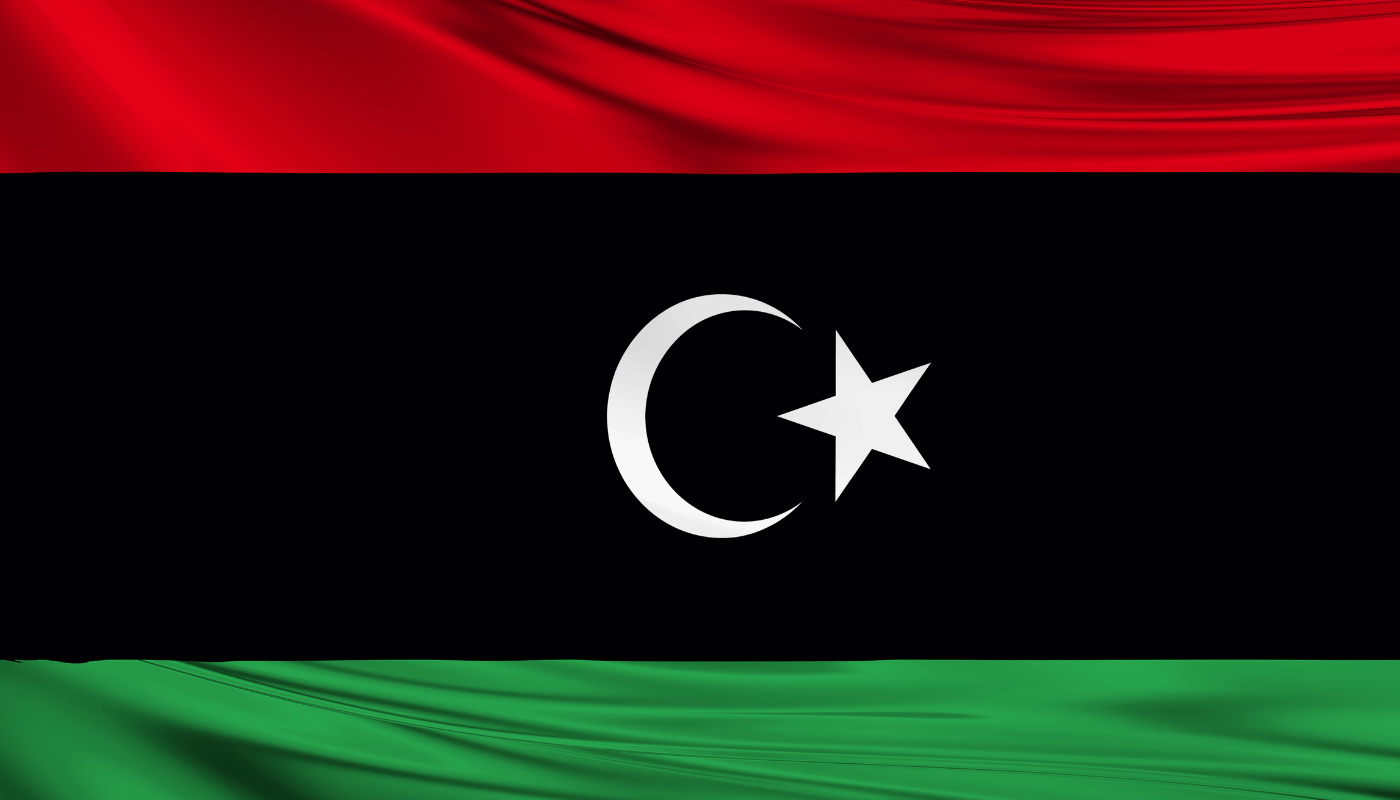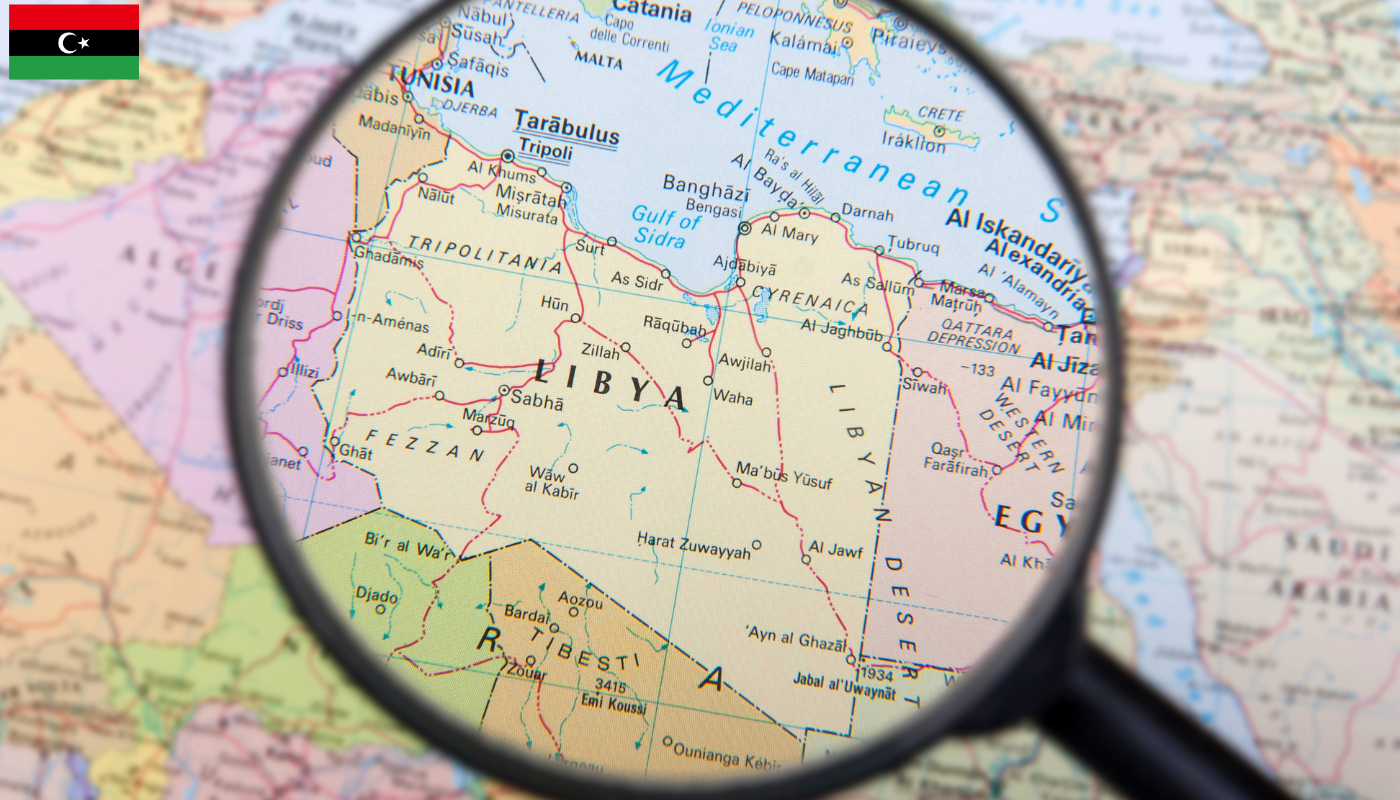Across the vast tapestry of nations, each country’s flag serves as a unique symbol of its identity, history, and values. Among these diverse ensigns, the flag of Libya stands out in its striking simplicity and powerful symbolism. As the only national flag in the world to consist of one solid color, it holds a fascinating story and significance that transcends its minimalistic design. Join us as we explore the meaning behind this exceptional flag and the singular color that defines it.
The Unique Color of Libya’s Flag
The national flag of Libya stands out distinctively among the pantheon of national flags due to its vibrant and unique color scheme. Unlike the more common combinations of red, white, and blue seen in many national flags, the Libyan flag features a simple yet striking design. It is the only national flag in the world with a single solid color – a deep, rich green. This choice is not just an aesthetic one; it carries deep symbolic meaning for the country and its people. The green color represents Islam, which is the dominant religion in Libya, and it also symbolizes the green landscapes of the country, especially its fertile regions which are a source of national pride.
The flag was adopted on November 11, 1977, and was used until the fall of Gaddafi’s regime in 2011. During Gaddafi’s rule, Libya’s flag was the only national flag in the world with just one color and no design, insignia, or other details. The bold choice of a single color was a radical departure from the previous flag, which featured a tricolor design of red, black, and green horizontal stripes. The adoption of the all-green flag was a clear statement of Gaddafi’s political and ideological vision for Libya, emphasizing unity under Islam and his revolutionary government.
Additional insights into the significance of Libya’s flag reveal that the choice of green goes beyond national and religious symbolism. It also reflects Gaddafi’s “Green Revolution,” which was an agricultural reform policy aimed at increasing self-sufficiency in food production. Furthermore, green is traditionally associated with prosperity, vitality, and growth, mirroring the aspirations of Libya towards progress and development. The flag’s simplicity and the color green thus encapsulate a multitude of meanings, making it a powerful symbol of Libya’s identity, beliefs, and aspirations.
| Feature | Description | Year Adopted |
|---|---|---|
| Color | Solid Green | 1977 |
| Symbolism | Islam, Fertility, Gaddafi’s Green Revolution | 1977 |
| Previous Design | Red, Black, and Green Horizontal Stripes | Pre-1977 |
| Unique Aspect | Only national flag with one color and no other details | 1977-2011 |
Exploring the Significance of Libya’s Solid Green Flag
Libya’s national flag stands out with its unique solid green color, a hue that carries deep symbolic meaning and reflects the nation’s history and values. This singular color choice sets it apart from the more complex designs of other national flags, rendering it an interesting subject of study for those intrigued by vexillology—the study of flags.
The choice of green for the Libyan flag is deeply rooted in the country’s connection to Islam, as green is considered the traditional color of Islam, symbolizing peace and prosperity. The flag was introduced in 1977 under the leadership of Muammar Gaddafi, who sought to represent his political ideology, the Third International Theory, which aimed to combine elements of socialism and Islam. This ideology was also detailed in his Green Book, further emphasizing the color’s importance to his regime. The solid green flag was a powerful symbol of Gaddafi’s revolutionary government, marking a significant departure from the previous tri-color flag that represented the Kingdom of Libya.
Not only does the green flag signify Libya’s cultural and religious identity, but it also serves as a reminder of a specific period in the country’s history. The era of Gaddafi’s rule was marked by significant political and economic changes, and the flag became a symbol of unity and national pride among his supporters. However, following the Libyan Civil War in 2011 and Gaddafi’s subsequent downfall, the flag was replaced by the pre-Gaddafi era flag, which once again represented the nation. This transition underscores the flag’s role not just as a national symbol, but as a reflection of Libya’s turbulent political landscape.
- The introduction of the solid green flag in 1977, marking a new era in Libyan history.
- Green as the traditional color of Islam, representing peace and prosperity.
- The flag’s connection to Muammar Gaddafi’s political ideology and the Green Book.
- The role of the flag in symbolizing unity and national pride among Gaddafi’s supporters.
- The replacement of the solid green flag following the Libyan Civil War, highlighting its political significance.
Historical Evolution of Libya’s Flag
The national flag of Libya stands as a vibrant symbol of the country’s identity and sovereignty, reflecting its rich and complex history through its colors and design. The evolution of Libya’s flag is a testament to the nation’s enduring struggle for freedom and unity. Initially, during the era of the Kingdom of Libya (1951-1969), the national flag bore witness to the country’s newfound independence. This flag was a tricolor, consisting of red, black, and green horizontal stripes, with a white crescent and star in the center, representing the country’s commitment to Islam and its heritage. However, the flag underwent a radical transformation in 1969 following a coup d’état that brought Muammar Gaddafi to power.
Gaddafi’s regime introduced a series of changes that reflected its political and ideological stance. In 1977, Libya adopted a new flag, which was plain green, symbolizing Gaddafi’s political philosophy outlined in his Green Book. This flag was unique as it was the only national flag in the world with just one color and no design, insignia, or other details. This period marked a significant departure from traditional symbols, emphasizing the revolutionary nature of Gaddafi’s government. The fall of Gaddafi’s regime in 2011 led to another pivotal moment in the history of Libya’s flag. The National Transitional Council reinstated the original tricolor flag of the Kingdom of Libya, signaling a return to the values and aspirations that the flag had initially represented.
Today, the flag not only symbolizes the nation’s hope for peace and stability but also serves as a reminder of its tumultuous past. The colors of the flag – red, black, and green – are now embraced as key components of Libya’s national identity, each representing different aspects of the country’s heritage and aspirations for the future. The black stripe, in particular, honors the memory of those who fought for independence, while the red and green stripes reflect the bloodshed for freedom and the country’s prosperity, respectively. The white crescent and star continue to signify the country’s adherence to Islam. This historical evolution of Libya’s flag underscores the dynamic nature of national symbols and their ability to encapsulate a nation’s collective memory and aspirations.
| Period | Flag Description | Significance |
|---|---|---|
| 1951-1969 | Red, black, and green horizontal stripes with a white crescent and star | Independence and the Kingdom of Libya |
| 1969-1977 | Various designs reflecting the Libyan Arab Republic | Transition and search for identity |
| 1977-2011 | Plain green field | Gaddafi’s Green Book and the Jamahiriya era |
| 2011-present | Return to the original tricolor with a white crescent and star | Revolution, freedom, and a new beginning |
Symbolism Behind the Solid Color
The national flag of Libya is distinguished by its unique and singular color scheme, which holds profound symbolic significance. Unlike the multicolored flags of other nations, Libya’s flag features a simple yet powerful design. This design choice is not arbitrary but is deeply rooted in the country’s historical, cultural, and political identity.
The flag’s solid green color was chosen to symbolize Islam, which is the predominant religion in Libya and a crucial aspect of its national identity. Green is traditionally associated with Islam due to its frequent mention in the Quran and its depiction as the color of paradise. Furthermore, the green color represents a commitment to progress, prosperity, and unity within the nation. It’s a color that embodies hope and a vision for a better future, reflecting the values and aspirations of the Libyan people.
Additionally, the green color in Libya’s flag serves as a reminder of the country’s revolutionary past. It signifies the bloodshed and sacrifices made by Libyans in their struggle for independence and sovereignty. This singular color thus encapsulates a message of resilience, freedom, and national pride, uniting the Libyan people under one banner.
| Element | Symbolism | Significance |
|---|---|---|
| Green Color | Islam | Represents the dominant religion and its values |
| Green Color | Prosperity & Progress | Symbolizes hope and vision for a prosperous future |
| Green Color | Unity | Emphasizes national unity and the collective identity |
| Green Color | Revolutionary Past | Reminds of the sacrifices for independence and sovereignty |
| Green Color | National Pride | Encapsulates resilience, freedom, and pride |
Global Perceptions of Libya’s Flag
The national flag of Libya stands as a powerful symbol, embodying the country’s rich history, relentless struggles, and its aspirations for unity and freedom. Over the years, the global perceptions of Libya’s flag have evolved, mirroring the tumultuous journey of the nation itself. Initially, the flag was seen as a beacon of hope during the country’s fight for independence. Its unique design and colors were perceived as a reflection of Libya’s distinctive identity and sovereign status in the international arena.
In recent years, the flag has taken on new layers of meaning, especially in the context of the Libyan civil conflict and the subsequent efforts at national reconciliation. Internationally, it is recognized not just as a state symbol but also as a representation of the Libyan people’s resilience and their unwavering desire for peace and stability. The green color, in particular, has been a subject of interest, symbolizing prosperity and progress in Libyan culture. However, it’s essential to note that interpretations can vary significantly across different cultures and political contexts, highlighting the complexity of global perceptions towards national symbols.
Additional Insights on Global Perceptions
The international community’s engagement with Libya, through diplomatic relations and media coverage, has further shaped the perception of its flag. As the emblem of Libya is displayed in global forums and news outlets, it reinforces the country’s presence on the world stage, inviting varied interpretations based on current events and historical associations. This dynamic interplay between the flag’s symbolism and global events underscores the evolving nature of national identity in an interconnected world.
- The flag as a symbol of independence and sovereignty
- Interpretations of the green color in Libyan culture and beyond
- The impact of civil conflict on the flag’s international perception
- The role of media in shaping the global view of Libya’s flag
- The significance of national symbols in fostering unity and peace
Changes in Libya’s National Flags
The national flag of Libya has undergone several transformations, each echoing the political and historical shifts within the country. Initially, upon gaining independence in 1951, Libya adopted a flag consisting of a simple tricolor of red, black, and green stripes with a white crescent and star in the central black stripe. This design symbolized unity and the country’s connection to Islam. However, the flag’s identity was completely revamped in 1969 following a coup led by Muammar Gaddafi. The new regime introduced a plain green flag, representing Gaddafi’s political ideology outlined in his Green Book, making it the only national flag in the world with just one color and no design, insignia, or other details.
After the fall of Gaddafi’s regime in 2011, Libya witnessed yet another change in its national flag, reverting to the original pre-1969 design. This return was not merely a change in fabric but a powerful statement of reclaiming the nation’s identity and its roots of independence, unity, and freedom. The pre-1969 flag, with its rich symbolism and historical significance, was re-adopted amidst a wave of revolutionary fervor, marking a new chapter in Libya’s tumultuous journey towards self-determination and sovereignty.
| Year | Flag Design | Symbolism |
|---|---|---|
| 1951-1969 | Tricolor with Crescent and Star | Independence and Islam |
| 1969-2011 | Plain Green | Gaddafi’s Political Ideology |
| 2011-present | Tricolor with Crescent and Star (Re-adopted) | Reclamation of Independence and Unity |
| Note: The table provides a simplified overview of the changes in Libya’s national flag designs and their respective symbolism. | ||
The Significance of Green in Flags
Green is a color rich in symbolism and meaning, particularly when it comes to the world of vexillology, or the study of flags. This vibrant color often represents nature, fertility, and life itself. In the context of national flags, green can signify a country’s commitment to environmental conservation, its agricultural heritage, or a historical connection to a certain ideology or religion. For instance, many Islamic nations feature green in their flags as it is considered the traditional color of Islam, symbolizing paradise in the Quran.
Moreover, green is a color that stands for hope and renewal. It is this universal appeal that makes it a popular choice for flags. When a nation chooses green as a predominant color for its flag, it is projecting an image of optimism and a forward-looking vision. In the case of Libya’s national flag, the unique choice of an all-green design from 1977 to 2011 was unprecedented. It was the only national flag in the world with just one color and no design, insignia, or other details. This bold choice reflected the country’s political stance at the time, aligning with Muammar Gaddafi’s Green Revolution which emphasized self-reliance, Islamic principles, and socialist values.
Besides its political and religious connotations, green also serves as a powerful symbol of the earth’s fertility and the bounty of nature. This aspect resonates with countries that have rich agricultural traditions or those that prioritize environmental conservation. The inclusion of green in a flag can thus be seen as a tribute to the land itself and a pledge to protect and cherish the natural world.
- Green symbolizes nature and the environment.
- It represents fertility, life, and renewal.
- In many cultures, green signifies hope and optimism.
- For Islamic countries, green has religious significance, reflecting paradise.
- Green can symbolize a commitment to environmental conservation and sustainability.
Understanding the significance of green in flags offers insights into the values and aspirations of the nations that choose this color for their national symbols. It transcends mere aesthetic choice, embodying deep cultural, religious, and ideological meanings. Whether it is to signify a connection to the earth, a religious belief, or a vision for the future, green serves as a powerful communicator in the language of flags.
In conclusion, the color green in flags is more than just a design element; it is a multifaceted symbol with profound implications. Its presence on a national flag can speak volumes about a country’s identity, beliefs, and priorities. As such, the study of green flags opens a window into understanding the diverse tapestries of cultures and ideologies that shape our world.






